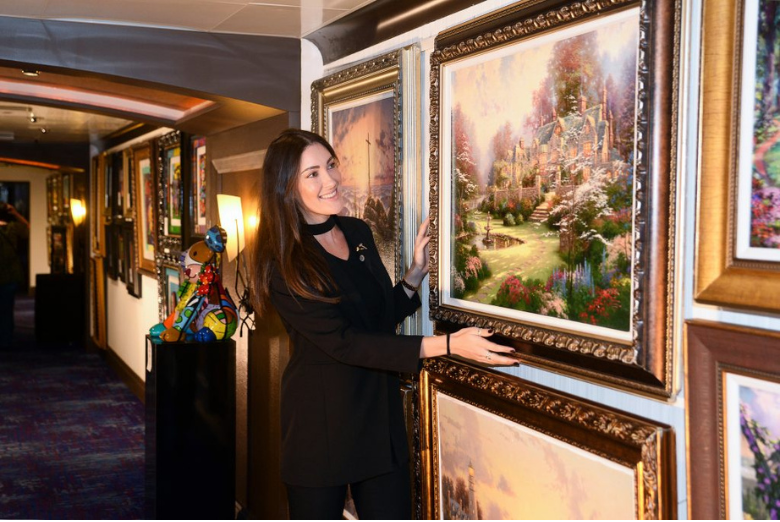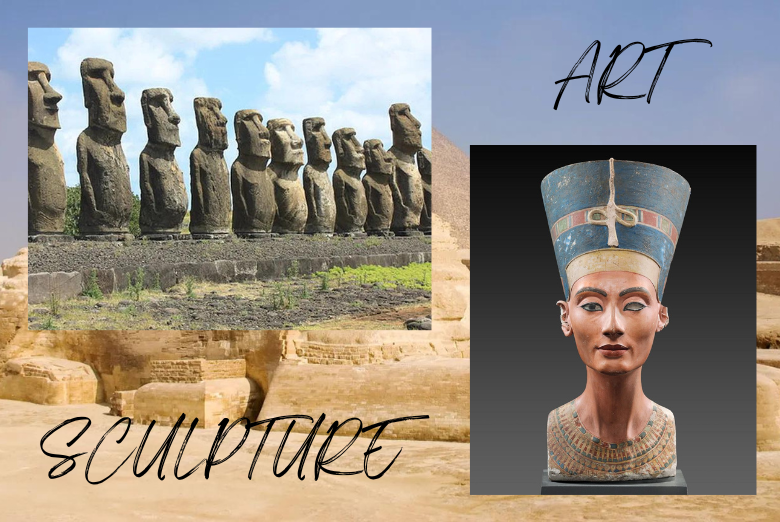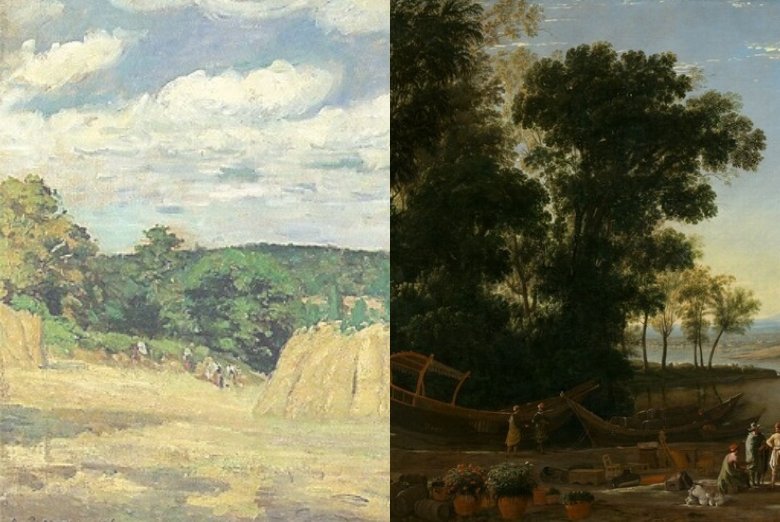Exploring Art Movements Through Time: A Journey of Evolution and Innovation
Art has always been a powerful form of expression, continuously evolving as artists respond to their surroundings, social changes, and advancements in technology. Each art movement, from the detailed works of the Renaissance to the emotive expressions of Abstract Expressionism, reflects unique characteristics and ideas from its era. This journey of exploring 7 art movements through time reveals the rich tapestry of human creativity and our endless quest to convey meaning and evoke emotion.
1. The Renaissance (14th-17th Century): Rediscovering Realism and Classical Ideals
Historical Context:
Originating in Italy, the Renaissance marked the end of the Middle Ages and the start of modern history. It was a period of “rebirth” that emphasized a return to the ideals of ancient Greece and Rome, particularly focusing on realism, humanism, and scientific exploration.
Characteristics:
Realism: Artists aimed to depict people, landscapes, and objects as accurately as possible. Perspective: The use of perspective was revolutionary, allowing for depth and dimension in paintings. Humanism: Human subjects were idealized, with a focus on anatomy and beauty.
Notable Artists:
Leonardo da Vinci, Michelangelo, Raphael, Botticelli.
Impact on Art:
The Renaissance redefined art by emphasizing realism, encouraging artists to experiment with light, shadow, and perspective. It set the foundation for future movements by merging science with artistic endeavor.
2. Baroque (17th Century): Dramatic Light and Grand Emotion
Historical Context:
Originating in Rome, the Baroque period was heavily influenced by the Catholic Church, which sought to convey religious themes through grandeur and emotional appeal in response to the Protestant Reformation.
Characteristics:
Dramatic Lighting Intense contrasts between light and dark, known as chiaroscuro, created a sense of drama and volume. Movement and Emotion: Scenes often depicted intense emotion, dynamic poses, and motion. Ornate Details: Highly detailed work, whether in painting, architecture, or sculpture.
Notable Artists:
Caravaggio, Rembrandt, Peter Paul Rubens, Bernini.
Impact on Art: Baroque art aimed to evoke awe and connect emotionally with viewers, setting a new standard for theatricality and grandeur in artistic expression. This period also saw a merging of art with other disciplines like music and architecture, creating cohesive and immersive experiences.
3. Impressionism (19th Century): Capturing Fleeting Moments and Light
Historical Context:
Emerging in France, Impressionism was a reaction against the rigid rules of academic art. It celebrated modernity, often focusing on scenes from everyday life rather than historical or religious subjects.
Characteristics:
Emphasis on Light and Color: Artists often painted outdoors, capturing natural light and its changing qualities. Loose Brushstrokes: Quick, visible brushstrokes conveyed the essence of a scene rather than precise details. Everyday Subject Matter: Ordinary scenes and landscapes took precedence over traditional, grand subjects.
Notable Artists:
Claude Monet, Pierre-Auguste Renoir, Edgar Degas, Mary Cassatt.
Impact on Art:
Impressionism broke from tradition and paved the way for experimentation. It valued the artist’s perception over objective reality, inspiring future movements like Post-Impressionism and Fauvism.
4. Post-Impressionism (Late 19th Century): Personal Expression and Distinct Styles
Historical Context:
Post-Impressionists built on the foundation of Impressionism but focused more on structure, form, and emotional depth, moving away from capturing momentary effects.
Characteristics:
Diverse Styles: Artists developed their unique styles, from Vincent van Gogh’s swirling colors to Paul Cézanne’s structured compositions. Emphasis on Emotion: Art became a vehicle for personal expression, exploring themes of spirituality, symbolism, and introspection. Experimentation with Color and Form: Bold colors and non-naturalistic forms reflected emotional responses rather than reality.
Notable Artists:
Vincent van Gogh, Paul Gauguin, Georges Seurat, Paul Cézanne.
Impact on Art:
Post-Impressionism highlighted the individuality of artists and laid the groundwork for modern art, encouraging freedom from academic conventions and inspiring movements like Cubism and Expressionism.
5. Cubism (Early 20th Century): Breaking Down Perspective
Historical Context:
Cubism, pioneered by Pablo Picasso and Georges Braque, emerged in the early 20th century as a revolutionary approach to form, perspective, and the depiction of objects.
Characteristics:
Geometric Shapes: Objects were broken down into geometric shapes and viewed from multiple perspectives at once. Fragmented Composition: Cubism challenged traditional perspectives, presenting multiple angles within a single Color Palette: Early Cubist works were often monochromatic, focusing on form rather than color.
Notable Artists:
Pablo Picasso, Georges Braque, Juan Gris.
Impact on Art:
Cubism introduced abstraction and a new way of interpreting the world, rejecting realistic representation and influencing later abstract movements. It underscored the idea that art could represent concepts beyond visual reality.
6. Surrealism (1920s-1950s): Exploring the Unconscious Mind
Historical Context:
Surrealism was influenced by the ideas of Freud and Jung, focusing on dreams, the unconscious, and the irrational.
Characteristics:
Dream-like Imagery: Scenes often combined realistic details with fantastical elements, creating a sense of the uncanny .Juxtaposition Ordinary objects were placed in unusual contexts, suggesting hidden meanings or exploring the subconscious. Automatism: Artists used techniques like automatic drawing to tap into the unconscious.
Notable Artists:
Salvador Dalí, René Magritte, Max Ernst, Frida Kahlo.
Impact on Art:
Surrealism expanded the possibilities of art, connecting it with psychology and philosophy. It opened the door for artists to explore the abstract and unseen aspects of the human psyche.
7. Abstract Expressionism (1940s-1950s): Emotion and Spontaneity in Pure Form
Historical Context: Emerging in post-World War II America, Abstract Expressionism was an intensely personal movement that focused on the artist’s emotion, spontaneity, and freedom of expression.
Characteristics:
Abstraction: Art became entirely non-representational, focusing on colors, shapes, and textures to convey emotion. Action Painting: Artists like Jackson Pollock created works through energetic and physical application of paint, emphasizing process over the final product. Emphasis on Scale: Many works were large in scale, aiming to immerse viewers.
Notable Artists:
Jackson Pollock, Mark Rothko, Willem de Kooning.
Impact on Art:
Abstract Expressionism emphasized freedom and emotion, transforming the act of painting into an expressive performance. It became the first American art movement to gain international prominence, solidifying New York City as a global art center.
Conclusion: The Ever-Evolving Nature of Art Movements
Exploring 7 Art Movements Through Time, these art movement reflects an evolution in human thought, creativity, and perception of the world. From the Renaissance’s pursuit of realism to the bold freedom of Abstract Expressionism, artists have continuously challenged conventions, inspiring future generations to explore and expand the boundaries of creativity. Understanding these movements offers a window into history and a deeper appreciation for the diverse ways art mirrors the human experience.



